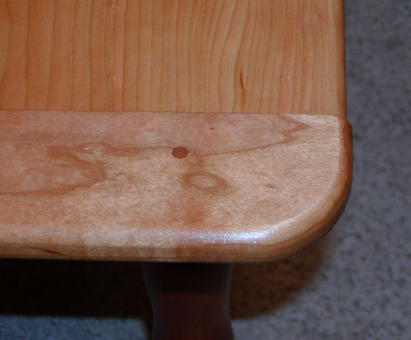

© 2000, 2010, 2012, 2018, 2019 D. Beach, Whispering Woodworks LLC
Breadboards and Company Boards Explained
Breadboard End Construction
The use of breadboard ends construction on table tops has been a trademark of high quality and attention to detail for hundreds of years. The purpose of this construction is to prevent any tendency of the large solid wood top to cup or warp during the seasonal humidity changes throughout the years. This construction - although appearing elegant and simple on the exterior is actually quite complicated in its design and execution. Because the table top is solid wood, it will expand and contract in width quite significantly between the summer and winter humidity conditions (it will be the widest in the summer, and most narrow in the winter). The breadboard ends are constructed with their grain running perpendicular to the main table grain to provide the strength needed to keep the top flat.
Whispering Woodworks
David S. Beach
Fine Custom Furniture and Reproductions
Leesburg, VA
703-737-2126
These pieces are examples of the type of work I do.
Let me know what I can build for you.
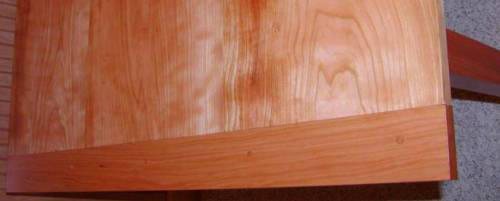
The breadboard ends are attached to the top with a multiple mortise and tenon joint which allows the top to
expand and contract while the breadboard end remains essentially the same length (wood does not significantly
change in length along the grain - only across the grain). Therefore, in the summer months, the main table top
will be even with the breadboard ends or slightly wider - in the winter as the top shrinks, it will be narrower than
the breadboard ends - this joint is a beautiful reminder that solid wood is still a living creature which moves with
the seasons.

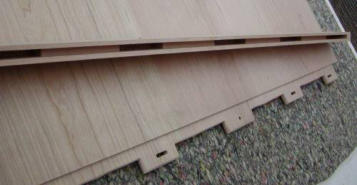
It is also possible to round the corners of the breadboard ends slightly - this not only creates a softer look, but it
is more forgiving with small children playing around the table.
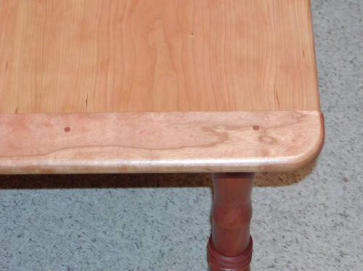
Company Boards Explained
The use of company boards is a very traditional method of extending the length of the table and provides several advantages over the use of leafs and extension mechanisms. • The main advantage of company boards is that the strength of the table top and base is maintained. The typical extension table splits the top and base in half at the center of the long apron (essentially the table's backbone) - this significantly weakens the table structure. • Company boards allow wide continuous grain tops - the grain runs along the length of the table - not across the width of the table as in typical extension table construction. • Company boards attach to the ends of the table - through a pair of holes at the top edge of the end apron. These holes are not readily seen in normal use due to the overhang of the top at the ends. • Company boards can be used to add between 12" and 24" at each end (16" is typical) • Company boards can feature breadboard ends for additional detail or styling - this is not required for structural purposes. The left photo shows a typical company board (note the additional detail of the breadboard ends on the company boards - this is an option.) The right photo shows the attachment of the company boards which are slid through a set of holes hidden at the top of the end aprons.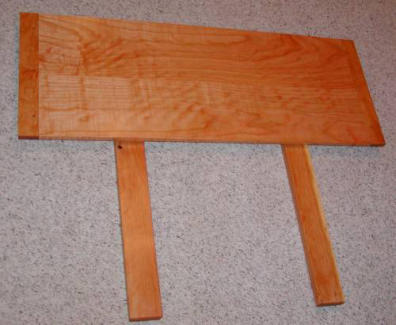
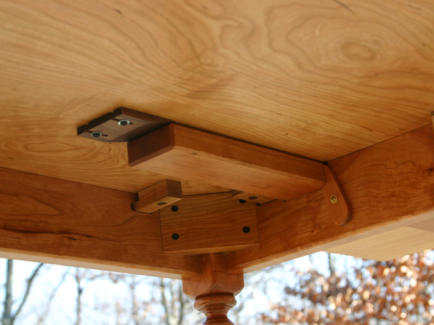

This photo shows the company board
being slid into place at the end of the table.
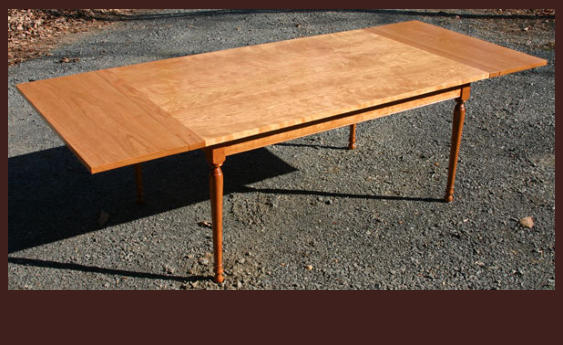
This photo shows a cherry table with a large set of company
boards.





© 2000, 2010, 2012, 2018, 2019 D. Beach, Whispering Woodworks LLC
Breadboards and Company
Boards Explained
Breadboard End Construction
The use of breadboard ends construction on table tops has been a trademark of high quality and attention to detail for hundreds of years. The purpose of this construction is to prevent any tendency of the large solid wood top to cup or warp during the seasonal humidity changes throughout the years. This construction - although appearing elegant and simple on the exterior is actually quite complicated in its design and execution. Because the table top is solid wood, it will expand and contract in width quite significantly between the summer and winter humidity conditions (it will be the widest in the summer, and most narrow in the winter). The breadboard ends are constructed with their grain running perpendicular to the main table grain to provide the strength needed to keep the top flat.
Whispering Woodworks
David S. Beach
Fine Custom Furniture and Reproductions
Leesburg, VA
703-737-2126
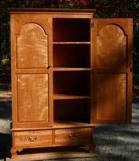


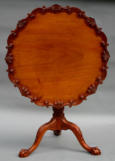
These pieces are examples of the type of work I do.
Let me know what I can build for you.
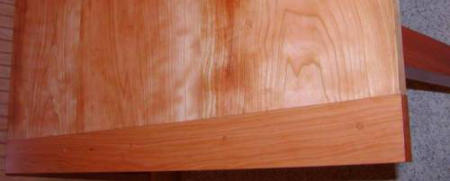
The breadboard ends are attached to the top with a multiple
mortise and tenon joint which allows the top to expand and
contract while the breadboard end remains essentially the
same length (wood does not significantly change in length
along the grain - only across the grain). Therefore, in the
summer months, the main table top will be even with the
breadboard ends or slightly wider - in the winter as the top
shrinks, it will be narrower than the breadboard ends - this
joint is a beautiful reminder that solid wood is still a living
creature which moves with the seasons.


It is also possible to round the corners of the breadboard
ends slightly - this not only creates a softer look, but it is
more forgiving with small children playing around the table.

Company Boards Explained
The use of company boards is a very traditional method of extending the length of the table and provides several advantages over the use of leafs and extension mechanisms. • The main advantage of company boards is that the strength of the table top and base is maintained. The typical extension table splits the top and base in half at the center of the long apron (essentially the table's backbone) - this significantly weakens the table structure. • Company boards allow wide continuous grain tops - the grain runs along the length of the table - not across the width of the table as in typical extension table construction. • Company boards attach to the ends of the table - through a pair of holes at the top edge of the end apron. These holes are not readily seen in normal use due to the overhang of the top at the ends. • Company boards can be used to add between 12" and 24" at each end (16" is typical) • Company boards can feature breadboard ends for additional detail or styling - this is not required for structural purposes. The left photo shows a typical company board (note the additional detail of the breadboard ends on the company boards - this is an option.) The right photo shows the attachment of the company boards which are slid through a set of holes hidden at the top of the end aprons.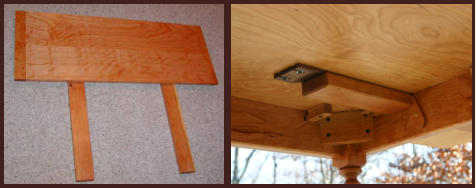

This photo shows the company board
being slid into place at the end of the table.
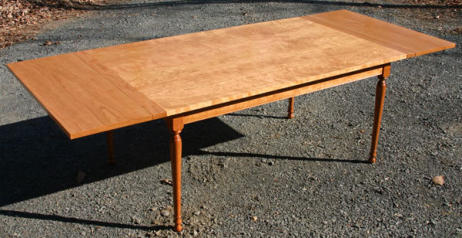
This photo shows a cherry table with a large set
of company boards.



















